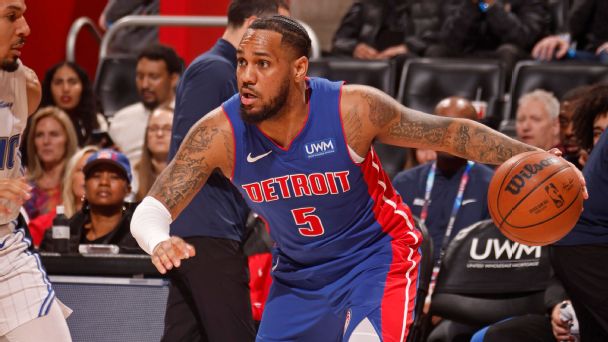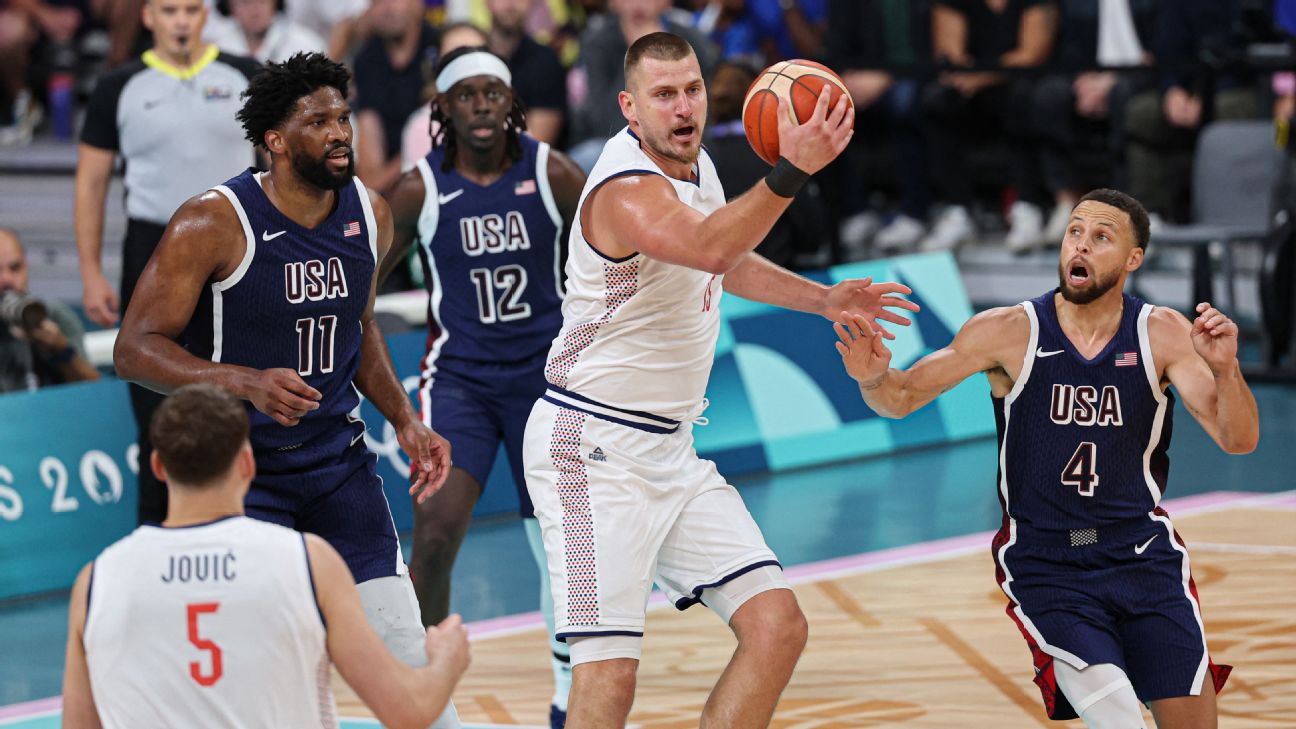The NBA trade deadline passed Thursday with several more deals completed.
Deadline day started with a few notable moves, including sharpshooter Buddy Hield going from the Indiana Pacers to the Philadelphia 76ers and former All-Star Gordon Hayward joining the first-place Oklahoma City Thunder in a deal with the Charlotte Hornets.
The New York Knicks bolstered their postseason chances by trading for Detroit Pistons duo Bojan Bogdanovic and Alec Burks in exchange for four players (Evan Fournier, Malachi Flynn, Quentin Grimes, Ryan Arcidiacono) and two second-round draft picks.
The Phoenix Suns also strengthened their lineup by adding versatile winger Royce O’Neale in a three-team deal involving the Brooklyn Nets and the Memphis Grizzlies, while the Dallas Mavericks acquired P.J. Washington from the Hornets for Grant Williams.
The day before the deadline, the Pistons made a deal with the Utah Jazz to acquire Simone Fontecchio and made a trade with the Minnesota Timberwolves for Monte Morris in exchange for Shake Milton and Troy Brown Jr.
The Miami Heat acquired veteran guard Terry Rozier from the Hornets on Jan. 23 for six-time All-Star Kyle Lowry and a 2027 first-round pick.
In early January, the Toronto Raptors sent two-time All-Star Pascal Siakam to the Pacers in a three-team trade also involving the New Orleans Pelicans. The Raptors received forward Bruce Brown, guard Kira Lewis Jr., Jordan Nwora, two 2024 first-round picks and a 2026 first-round pick, while New Orleans got cash considerations from the Pacers. Indiana also received a future second-round pick in the deal. In December, Toronto traded for RJ Barrett and Immanuel Quickley while sending OG Anunoby to the New York Knicks.
We grade those trades — and all the big trades! — below:
Jump to notable grades
New York Knicks. Miami will again have to pull a couple of playoff upsets over better teams on paper to return to the Finals for the third time in the Butler-Adebayo era.
Down the road, the Heat may still be able to work a bigger deal. Matching salary might actually be easier with Rozier on the books for $24.9 million in 2024-25 and $26.6 million in 2025-26, salaries that look reasonable based on his current level of play. Miami would have lost Lowry as matching salary when his contract expired this summer.
After dealing a lottery-protected 2027 first-rounder and unprotected in 2028 in this trade, the Heat are now a bit more limited in the picks they can offer via trade. After making this year’s pick, on draft night Miami could offer that player’s rights, an unprotected pick in either 2029 or 2030 and potentially a third first-rounder in 2031 conditional on the pick sent to Charlotte not rolling over to 2028. Given how distant most of that pick value is, the Heat will probably be relying more on the young talent currently on their roster — most notably Jaquez — to get in the bidding if Cleveland’s Phoenix Suns in the Western Conference, is betting on top-end talent over depth. Like those teams, the Celtics are also spending heavily in pursuit of a title right now.
Assuming Boston keeps an extra player on the roster to fill the spot vacated in this trade, the team’s luxury-tax bill will jump nearly $15 million based on the likely incentives in Holiday’s contract. (Holiday has $1.9 million in incentives counted as likely, per ESPN’s Bobby Marks, based on being an All-Star, making an All-Defensive team and other statistical thresholds.)
That’s just this season. Holiday is heading into the final season of his contract and will be eligible to add up to four years and $200-plus million in an extension starting six months after this deal is complete. Sources told ESPN’s Adrian Wojnarowski the Celtics are eager to retain him long-term, which makes sense. Boston gave up too much for Holiday to simply be a rental.
Wherever the two sides land on an extension, Holiday is likely looking at a raise next season at the same time Brown’s supermax extension kicks in, which could push Boston’s payroll into the stratosphere. For now, the Celtics having the core of a championship contender under contract through 2024-25 is a positive. At some point, though, the cost of keeping this group together with a looming supermax for Tatum will become prohibitive.
Between now and that unknown date, Boston is hoping to add an 18th championship banner. With the addition of Holiday, I again see the Celtics as the favorites to win the East — and perhaps even the title. This is the downside of how the Bucks pursued the Lillard deal. By sending Holiday to the Blazers, Milwaukee gave up any control over where he was rerouted that may have been possible if the trades were negotiated simultaneously. The Bucks surely hoped Holiday would end up in the Western Conference. Instead, he’s headed to their biggest rival on paper in the East.
The rematch of the thrilling, seven-game Boston-Milwaukee series we saw in the 2022 conference semifinals never materialized last spring because the Bucks were upset in the first round by the Brooklyn Nets the centerpiece of the trade sending Jordan Goodwin, whose salary is partially guaranteed. Assuming the Suns waive at least one of their players who aren’t fully guaranteed deals (Keita Bates-Diop, although the more options for Phoenix, the better.
![]()
Portland: B+
All along, I’ve felt that trading Lillard before training camp was the right move for the Blazers. It’s easy to talk about waiting for the best possible deal in July, with little pressure to make a move. Urgency clearly set in for Portland as Monday’s media day and the start of training camp approached.
With one caveat, the Blazers can look to a future built around recent lottery picks and . They’ve also locked in Lillard’s trade value without having to risk the possibility of an injury or age-related decline making it more difficult to deal him than it is coming off an All-NBA season.
The key caveat, of course, is that Portland has swapped one 33-year-old All-Star point guard for another. Holiday isn’t the kind of young talent a star trade would typically return, and without any ties to the Blazers or the kind of drawing power as Lillard, it seems inevitable Holiday will be traded again soon. Just how much Portland gets in return will determine how this deal compares to the possibility of sending Lillard to his desired destination, the .
From this trade alone, the Blazers aren’t returning nearly as much volume in terms of draft picks as Miami could have offered. Portland got a single first-round pick outright, though it’s a potentially great one. Even if Giannis extends his contract, he’ll be 34 by 2029. Lillard will be 38. The odds Milwaukee is still a contender by that point are remote, and there’s a reasonable chance of the Bucks bottoming out without either star (or, as noted, their own picks in between now and then).
The young talent the Blazers did add comes with baggage. The Suns’ willingness to part with Ayton, 25, without getting any above-average starters or any draft picks showcases just how eager Phoenix was to move on from the 2018 No. 1 pick. Ayton gets a fresh start in Portland at a position where the Blazers had no promising player on the timeline of the rest of their young core.
If Portland can get the kind of performance we saw from Ayton in the 2021 playoffs, when he averaged 15.8 points per game and 11.8 rebounds per game while helping the Suns to the NBA Finals, getting his contract at this low cost is a bargain. Admittedly, , but in the worst-case scenario, Ayton’s current deal expires in time for the Blazers to have massive salary-cap space in the summer of 2026, when Henderson will be entering the final year of his rookie contract.
Camara, the No. 52 overall pick in this year’s draft out of Dayton, is by far the lowest-profile part of this deal, but Portland likely also values him. Camara played well for Phoenix at summer league in Las Vegas, averaging 16.3 PPG and 7.0 RPG in four games. Camara has a better chance of playing time with the Blazers than if he had stayed with the Suns.
Above and beyond the potential to reroute Holiday, Portland still feels like a team in transition. The Blazers re-signed to a five-year, $160 million deal this summer, and the 29-year-old forward feels out of place on a team that’s rebuilding. Adding Ayton makes it unlikely Portland will bottom out, but this trade now puts a timeline on the Blazers contending. Ideally, they want to be contenders again by 2028, maximizing the potential value of pick swaps then and in 2030, when Henderson (24 in 2028) and Sharpe (25) will be hitting their prime years.
As a result, more change is sure to come in Portland. The Blazers can continue the process with clarity now that they’ve secured value in a Lillard trade that seems to have left all sides satisfied.



